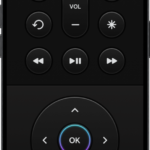Remember the days when work ended at 5 PM and the office lights dimmed with the setting sun? In our current era of constant connectivity and blurred lines between work and life, those days seem as distant as dial-up internet. Now, the need for workplace mental health optimization isn’t just a buzzword, it’s a survival strategy. But don’t worry, it’s not about swapping spreadsheets for scented candles and chanting “om.” Here’s a fresh take on optimizing your workplace culture:
Fueling the Engine, Not Draining the Tank:
It’s easy to fall into the “work more, achieve more” trap, but imagine your brain as a car. Pushing it past its limits leads to breakdowns, not breakthroughs. Instead, prioritize psychological safety. Encourage open communication, create a supportive environment, and empower employees to voice concerns without fear. Remember, happy and secure employees are engaged employees.
Embracing the Off-Switch:
Let’s face it, the “always-on” culture is exhausting. Promote healthy boundaries by encouraging employees to disconnect. Respect evenings and weekends, set clear communication expectations, and lead by example. Remember, rest and rejuvenation are essential for peak performance.
From Hamster Wheels to Climbing Frames:
Reimagine the traditional work structure. Offer flexible work arrangements, embrace remote work options where feasible, and encourage regular breaks for movement or mindfulness. Remember, giving employees control over their environment reduces stress and fosters creativity.
Mindfulness:
More Than Just Buzzwords: Integrate mental well-being practices into the workday. Offer mindfulness sessions, meditation resources, or even walking groups. Encourage open conversations about mental health and normalize seeking help when needed. Remember, investing in mental well-being is investing in a healthier, happier workforce.
Collaboration, Not Competition:
Ditch the cutthroat atmosphere and create a culture of collaboration. Organize team-building activities, celebrate collective wins, and encourage knowledge sharing. Remember, stronger connections lead to stronger support systems, which are crucial for navigating challenging times.
Remember, optimizing workplace mental health is not about one-size-fits-all solutions. It’s about listening to your employees, fostering open communication, and creating a culture that prioritizes well-being as much as productivity. By doing so, you’ll unplug the power cord on burnout and recharge your workplace for sustained success and a happier, healthier team.










